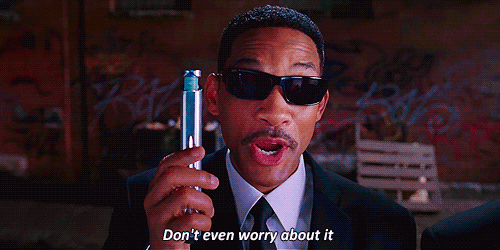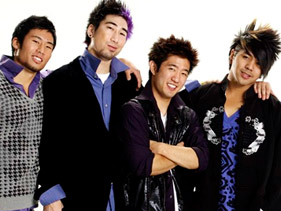An Emotional Reality
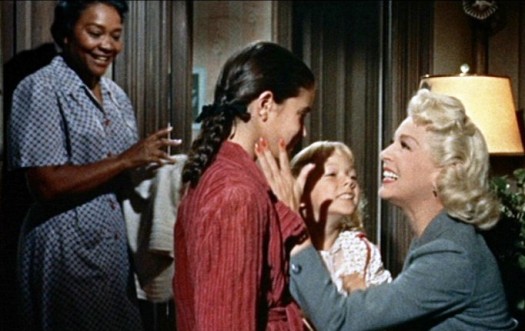 I wrote this paper based on the movie, “Imitation of Life” for one of my classes at UMUC. By the way, I received a grade of “A.“
I wrote this paper based on the movie, “Imitation of Life” for one of my classes at UMUC. By the way, I received a grade of “A.“
This 1959 remake is based on the Fanny Hurst novel and is directed by Douglas Sirk. The film begins with Lora Meredith, who loses track of her daughter, Susie, in 1947, on Coney Island. She eventually finds Susie playing with a black woman’s daughter, Sara Jane, who is about the same age. A photographer, Steve Archer, takes a mother-daughter picture, which is bought for an ad and lands Lora future modeling assignments.
Lora and her daughter, Susie, continued to struggle after the death of Lora’s husband. The black woman, Annie Johnson, was abandoned by her husband, Sara Jane’s father, before Sara Jane was even born. She had trouble finding work as a domestic because, as she tells Lora, “Nobody wants a maid who has a child.” During a chance meeting on the beach, their lives combine and together they struggle to survive in New York City. Lora, who is an aspiring actress, comes to depend on Annie, who moves into Lora’s small apartment and becomes her maid. Annie makes a domestic haven for Lora, Susie, and Sara Jane. Still, Annie struggles as Sara Jane rejects her racial identify and attempts to pass for white.
Here, we have two single mothers, an actress and her black maid. Both women struggle to raise their daughters. In the first plot, Lori, played by Lana Turner, hesitates because she is torn between her love for photographer, Steve, played by John Gavin, and her relentless pursuit of a budding career as an actress. In the second plot, there are disturbing family relations between Annie, played by Juanita Moore, and her daughter, Sara Jane, played by Susan Kohner. The young girl won’t or can’t accept the fact that she is black; therefore, she rejects her heritage and her mother, rather than present her to friends and boyfriends.
When Lora is finally on the road to becoming a successful actress, she no longer spends quality time with Susie, played by Sandra Dee or tries to work on a loving relationship with devoted mate, Steve. Eventually, Steve asks her to marry him and to give up her dream of becoming an actress. After a very heated argument, Steve finally gives up and leaves. Meanwhile, Annie continues to be the perfect mother to Sara Jane, who clearly wants nothing to do with her own mother or the black environment. Still, she continues to pretend to be “white.”
Between 1947 and 1957, Lori becomes a successful stage actress on Broadway. During this time, Lora finds solace in a relationship with Allen Loomis, played by Robert Alda, but does not find true love and satisfaction, as she did with Steve. Those years pass quickly and Susie and Sara Jane grow up to become beautiful young ladies. Steve also comes back into the picture, during a chance meeting. This meeting rekindles some old sparks between Lora and Steve, who still loves Lora. Steve’s return also sparks a touch of puppy love for Susie, who adores Steve, since he always treated like his very own daughter. This happens because Lora has always been so busy with her career and Susie has always felt neglected. Thus, we have Steve, who is always around to save the day and provide the guidance that only a loving parent should give. This newly found attraction also stirs up some feelings of jealously, especially when Mommie Dearest decides to finally accept Steve’s marriage proposal.
Sadly, the only time Sara Jane finally acknowledges her mother is after her death. For the funeral scene, gospel singer, Mahalia Jackson sings “Trouble of the World.” With the brilliant hues of the stained-glass windows and the floral arrangements, the white horses, requested by Annie, and the white casket, which Sara Jane flings herself hysterically on, when she finally realizes the emotional cost of being “white,” all makes for a real tear jerker. As a final touch, the white women, Lora and Susie, along with Sara Jane, who wanted so desperately to be “white,” are reunited as one in Lora’s black Chrysler limousine, temporarily equalized by the black of mourning. Wow! What a finish! This film really makes you appreciate your own mother even more.
Face-Negotiation Theory
According to Professor Stella Ting-Toomey’s face-negotiation theory, face is a metaphor for our public self-image. Face work refers to specific verbal and nonverbal messages that help to maintain and restore face loss, and to uphold and honor face gain. Face work and corresponding styles of handling conflict vary from culture to culture. Ting-Toomey suggests that face maintenance is the crucial intervening variable that ties culture to people’s way of handling conflict.
Face is a universal concern because it is an extension of self-concept. Penelope Brown and Stephen Levinson define face as the public self-image that every member of society wants to claim for himself/herself. Ting-Toomey defines face as the projected image of one’s self in a relational situation. Thus, the meaning of face differs, depending on differences in cultural and individual identifies.
See how each of the following examples of facework, affects tormented characters and their lives throughout the movie, “Imitation of Live.”
Face concern focuses on whose face a person wants to save. One can save one’s own face or the face of others. Those in individualistic cultures tend to be more concerned with preserving their own face, whereas people in collectivistic cultures value maintaining the face of the other party.
In the first plot, Lora is determined to become a successful actress, regardless of the fact that she is a single parent and is thirty-something. She sacrifices quality time with her daughter and a long-lasting relationship with Steve. Lora is focused on saving her own face because she wants to be something that society will honor and respect. Tired of struggling and being poor, Lora is determined to make it big, at all costs.
In the second plot, Sara Jane was trying to save her own face by pretending to be from a superior culture or what she and society thought to be a superior culture during the 1940’s and the 1950’s. Since she was a product of a black mother and a white father, she used her domineering assets to fool everyone into thinking she was the product of pure white parents. Her mother’s ancestry shamed and humiliated her. Pretending to be “white” opened doors for her as far as jobs, friends, and lovers was concerned. Being “white” allowed her to walk through the front door of a restaurant, a club, and more. Being “black,” meant being poor, broke, and alone.
Mutual face is where there’s an equal concern for parties’ image, as well as the public image and their relationship.
In the first plot, both Lora and Annie form a long-lasting bond, where mutual respect, friendship, and honor are shared. Even though Lora is white and Annie is black, they continue to raise their daughters, with love and devotion. Lora never disrespected Annie in public; nor did Annie of Lora. Even though Annie was Lora’s maid, they shared the same house, ate at the same table, and shared some of the same problems. Lora often hated the way Sara Jane mistreated her mother and she often told her so.
In the second plot, Sara Jane is reunited with her mother, but, unfortunately, it is too late. Reality hits when Annie dies and Sara Jane finally comes to grip with her true “color.” Suddenly, being “white” takes a back seat to being Annie Johnson’s “black” daughter. As she runs after her mother’s hearse, she no longer cares about society and what they think. All she cares about is letting her mother know how deeply sorry she is for treating her so badly.
Face-restoration is the face work strategy used to stake out a unique place in life, preserve autonomy, and defend against loss of personal freedom. It is the typical face strategy across indiviualistic cultures. It often involves justifying one’s actions or blaming the situation.
In the first plot, Lora finally realized that she made a mistake when she dismissed Steve from her life 10 years ago. Even though she felt trapped by the love of a good man, she eventually came to realize that fame and fortune can’t buy true happiness. This absence also made Steve realize that being your own woman doesn’t mean you have to give up being in love. Face is restored for Lora and for Steve. A mutual ground is also met. Annie also made Lora realize that she should have spent more time with her daughter, Susie, rather than chasing after a selfish dream.
In the second plot, for Sara Jane, being “black” in the 1940’s and 1950’s meant shame, disgust, and losing face with modern day society. For 10 years, she tormented, embarrassed, and turned her back on her loving, doting mother. After her mother’s death, Sara Jane finally realized that being “white” meant absolutely nothing, without the love and nurturing of a wonderful mother. Her face was restored to its true “color” but, with an added consequence.
Face-giving is the face work strategy used to defend and support another’s need for inclusion. It means taking care not to embarrass or humiliate the other in public. It is the characteristic face strategy across collectivist cultures. It often involves self-effacement.
In the second plot, Sara Jane did not allow others to give face because she refused to acknowledge the fact that she was of black descent and she also refused to respect the opinions of her mother, Lora, Steve, and Susie, even though they were considered to be her family and friends. She respected them but, at the time, she chose to block certain aspects of her life, completely out of her mind and out of her controlled environment. Instead she chose to hide the truth and to torment her own mother, who truly loved her dearly. Sara Jane wanted to be white because there was power, prestige, and acceptance tied into being labeled a white woman. Being black, especially in the 1940’s and 1950’s was looked upon as a curse.
References
Griffin, E. (2006). A First Look at Communication Theory (6th ed.). New York, NY: McGraw-Hill, Internet Movie Database, Inc (2006). Imitation of Life. Retrieved on November 8, 2006 from http://imdb.com/title/tt0052918/
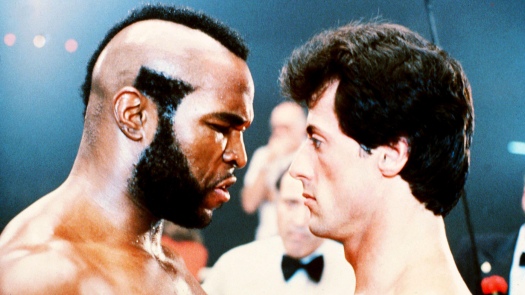 Take a Look at My Review of the Third Installment of the “Rocky” Film Series
Take a Look at My Review of the Third Installment of the “Rocky” Film Series
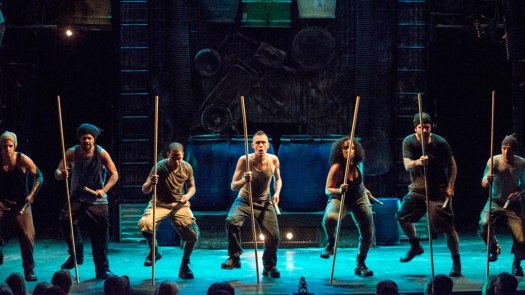

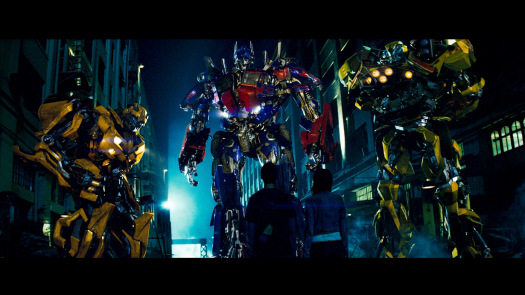 Autobots Vs. Decepticons
Autobots Vs. Decepticons I wrote this paper based on the movie, “Imitation of Life” for one of my classes at UMUC. By the way, I received a grade of “A.“
I wrote this paper based on the movie, “Imitation of Life” for one of my classes at UMUC. By the way, I received a grade of “A.“